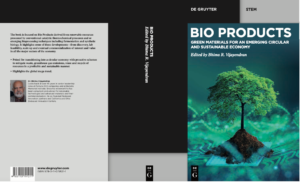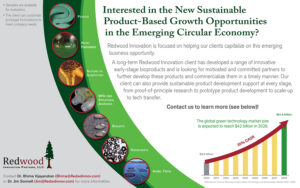Conventional oil seed crops and the crops in the spotlight recently like camelina, jatropha, castor, coconut, and jojoba all have advantages and disadvantages that are critical to understand when developing new bio-enabled business plans. There are also multitudes of oil-crop species known to the academic literature with little, if any, work performed to bring these species into commercial relevance. That’s changing with species like crambe known for its lubricant properties, Lesquerella fendleri (a mustard producing so-called bladderpod oil), and Bernardia Pulchela (contains epoxy oil). Contact Redwood Innovation Partners to start the conversation on how to bring bio-based technology to work for your business growth objectives.
Recently, Bhima Vijayendran of Redwood Innovation Partners attended the 8th BIO Pacific Rim Summit conference held in San Diego, California, on December 11, 2013, and delivered an invited talk landscaping current technology and market potential of plant oil feedstocks and their ability to compete with fossil based chemical products. He also outlined best practices in bioproduct commercialization by looking at a case study of Battelle’s several R&D 100 Award winners,-soy-based platform including plasticizer, toner, polymers, polyols, and powder coatings, developed in cooperation between Batelle and the Ohio Soybean Council.
Bhima highlighted the factors needed for bio-cased product commercialization success, in order of importance.
- First and foremost , the economics must work.
- Second, performance must meet or exceed market expectations, often a petro-derived incumbent product.
- Thirdly, environmental considerations like sustainability metrics (life cycle analysis and carbon footprint) and health performance (no negative impact on human or life in the environment, no toxic chemicals used in production) must be better than existing solutions.
Bhima specified the value propositions in the soy-based plasticizers and noted that technologies based on one soy-based platform have yielded commercial value for companies including Advanced Image Resources, PolyOne, Emery Oleochemicals, Momentive, Nexoleum, and Biobent Polymers.
Bio-oils only amounted to about 150 million tonne market, compared to 380 million tonne petrochemical market for the chemical industry. Palm, soybean, rapeseed (canola), and sunflower oils make up 80% of the oilseed crops supplying mostly food markets, with about a third going to oleochemical conversion processes. Common applications include feed, soaps, detergents, and surfactants, lubricants, methyl esters, biodiesel and renewable diesel, drying oils, inks, and hydraulic oils. Consideration of the chemistry of individual plant oils reveal that some are better than others for specific functionality and end use.
As a platform, bio-oils are amenable to a diverse set of conversion processes such as epoxidation, hydrogenation, hydroxylation, conjugation, cleavage, oxidation, and metathesis; these are all well-known and mature technologies that can be used to create novel bioproducts, many with existing and new markets.
All of the oilseed crop bio-oils and conversion technologies have their technical advantages and disadvantages with varying degrees of promise for commercial opportunities. Redwood Innovation Partners uses these insights in surveying which technologies make sense for clients to achieve business growth objectives and realize actual products that connect technology push with market pull.



